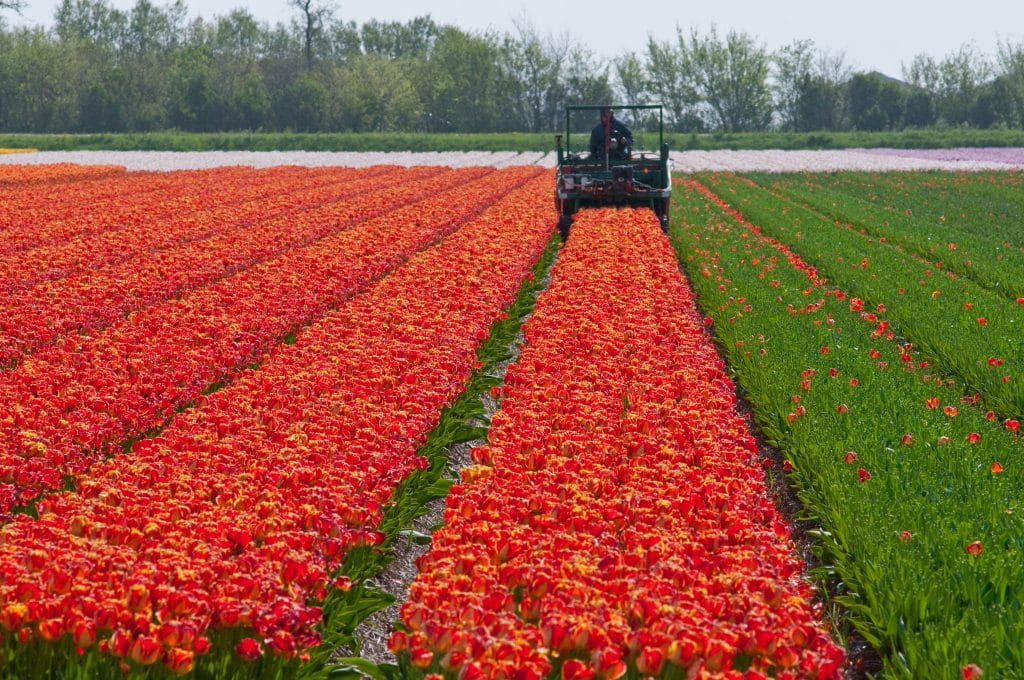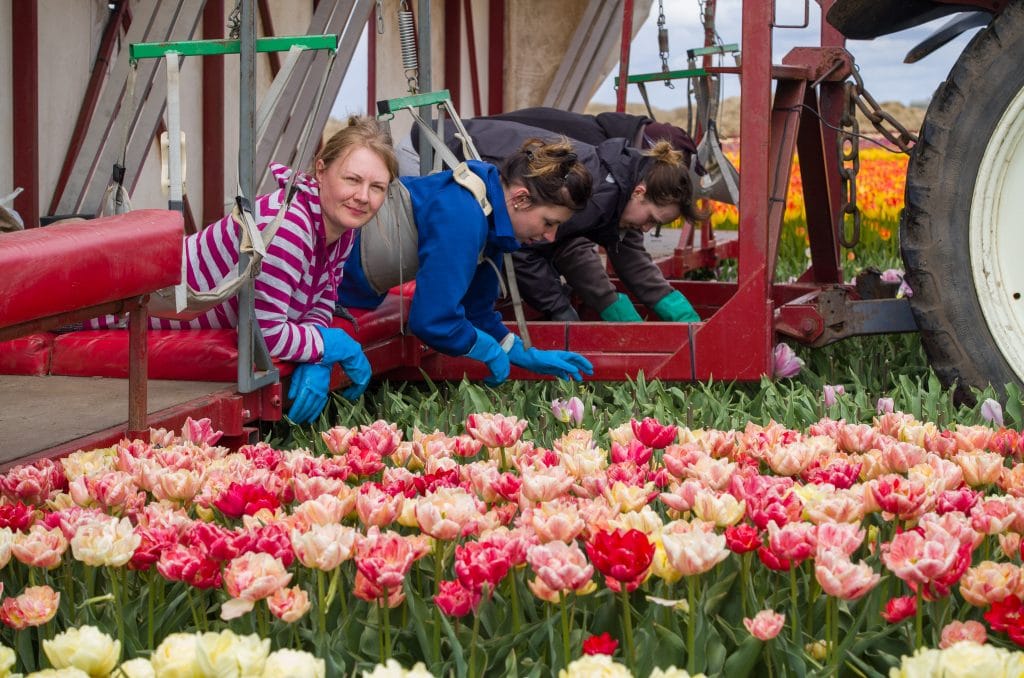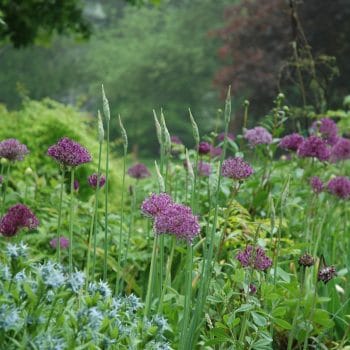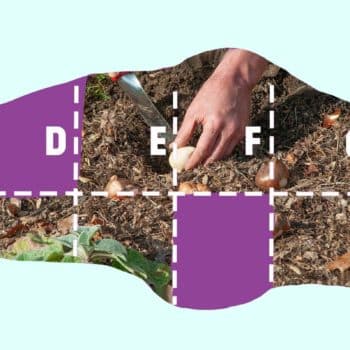
A kopmachine looks like a lawn mower on stilts. It is designed to cut and remove tulip flowers. If left in place, the flowers take energy that would otherwise go to the bulbs.
When tulips start to bloom in the fields, Dutch bulb growers do their best to cut off the flowers as quickly as possible. That’s because the flowers take energy from the bulbs below, preventing them from growing to top size. A grower lets his fields bloom just long enough to cull plants that are unhealthy or not the correct variety. After that, he brings out a kopmachine (beheading machine) like the one pictured above.
The kopmachine gets most of the flowers but not all of them. The grower sets the blades as low as possible to cut as many flowers as possible without harming the foliage. The leaves are the food factories for the bulbs; the last thing the grower wants to do is cut the leaves. So flowers below the reach of the blades survive.

The kopmachine gets most but not all of the tulip flowers. Workers lying on special trailers or self-propelled machines reach down and snap off the rest.
Get Every Last Bulb
But the grower isn’t satisfied with “most.” He wants every last flower removed from his fields. He can ask his workers to walk between the rows and snap off the remaining flowers, but that is time-consuming and back-breaking work. Instead, he may employ another contraption that, so far as we know, does not have a special name. It is basically a trailer (sometimes a self-propelled machine) that is designed to suspend people, who are lying on their stomachs, just above the tulip leaves. As workers pass over the rows, they reach down and break off all the flowers the kopmachine missed.
The efficiency of the beheading operation is nothing if not remarkable. A field that is a riot of color one day may be reduced to a carpet of blue-green leaves the next. And the grower couldn’t be happier.


